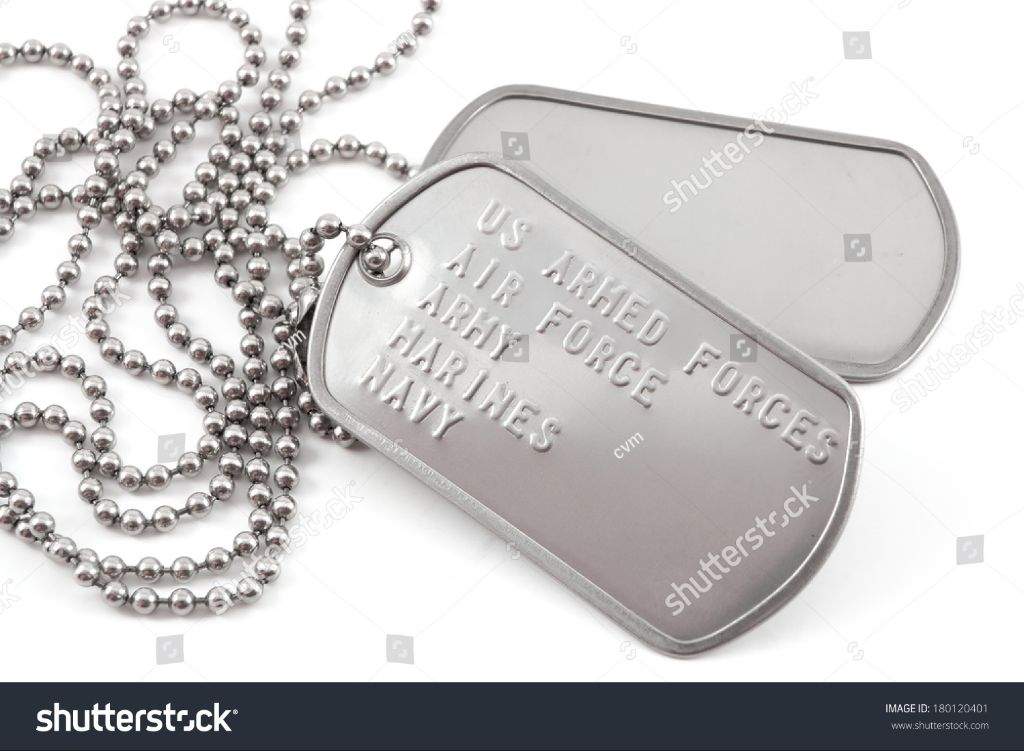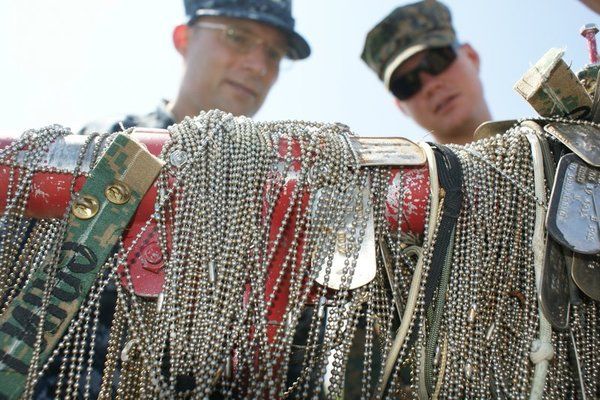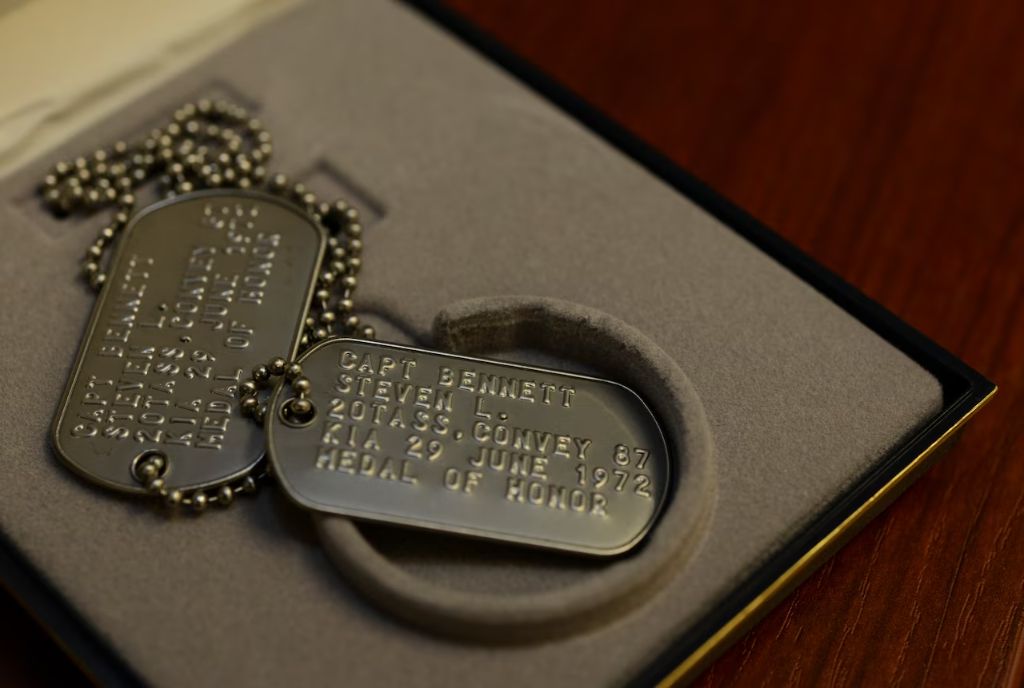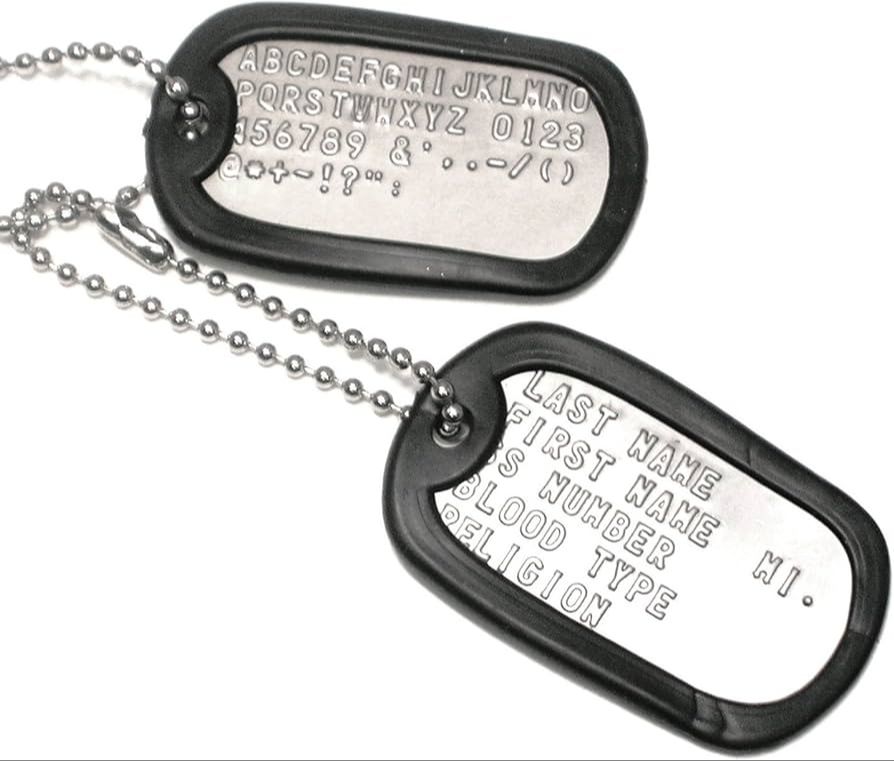Introduction
Dog tags have been used by militaries for over a century to provide vital identification for service members in the event of their injury or death. Though the exact origins are unclear, evidence suggests the use of personal identification tags became widespread during the American Civil War. These early tags were often improvised from materials like wood or paper, engraved with the soldier’s name and unit. The nickname “dog tags” emerged later due to their similarity to registration tags worn by dogs.
The purpose of dog tags has always been straightforward – to enable rapid identification of casualties on the battlefield. Standardized dog tags issued by the military provide each service member’s essential details like name, service number, blood type etc. This helps ensure proper identification, notification of next of kin, and handling of remains. Though the materials and details have evolved, this central function of dog tags in the military persists today.
Current Air Force Dog Tag Regulations
According to the Uniform Policy (DAFI 36-3802), there are specific regulations regarding dog tags for active duty airmen in the U.S. Air Force.
All active duty airmen are required to wear two ID tags around their neck while in uniform. One tag must display the member’s name, grade, service number and religious preference. The other tag displays the member’s blood type and social security number.
Dog tags must be worn and properly displayed under the shirt when in uniform. They can be exposed or concealed when airmen are out of uniform. The tags should lay flat and not be intentionally concealed in uniform.
The tags are considered part of the uniform and must meet military specifications and requirements. Airmen are not authorized to wear homemade, engraved or custom dog tag designs while in uniform.
Dog Tag Basics
Air Force dog tags are made from stainless steel metal and have a rectangular shape that is approximately 2 inches long by 1 1/8 inches wide. The tags have a hole punched at one end so they can be worn on a metal beaded chain necklace.

Each Air Force member is issued two identical dog tags. The tags contain the service member’s name, branch of service (US AIR FORCE), service number, blood type, and religious preference. One tag is meant to remain with the body if killed in action, while the other is collected for record keeping purposes.
According to the Air Force Instruction 36-3026, all active duty and reserve Air Force members are required to wear dog tags at all times while in a field environment, deployed, or on an Air Force installation. Dog tags are an important means of identifying service members in combat or other dangerous situations.
Obtaining Dog Tags Initially
Air Force trainees receive their first set of dog tags during basic military training (BMT). According to Air Force Dog Tags with Correct USAF ID Tag Format, the process for obtaining dog tags initially at BMT is as follows:
During the first week of BMT, trainees’ fingerprints are taken and used to create their military service record. This information is used to engrave each trainee’s name, Social Security number, blood type, and religious preference onto a pair of dog tags.
The dog tags are issued to trainees during basic field training later in BMT, usually in the sixth week. Trainees are instructed to wear the dog tags at all times throughout training.
The initial pair of dog tags are made from aluminum with a silver finish. The tags are engraved using old-fashioned presses, giving them a classic look. The dog tags are worn on ball chains around the neck underneath the uniform.
After graduating BMT, Air Force members can continue wearing the same dog tags or order customized engraved tags. However, the original pair provides an official identification record in case of death or severe injury.
Replacing Dog Tags
If an active duty service member loses or damages their dog tags, they can get replacements through their unit’s administrative office or personnel support division. The service member will need to provide their name, social security number, and any other identifying information to verify their identity and active duty status. Once verified, the administrative office will order and issue new dog tags within a few weeks.
Veterans who have lost their dog tags after separating from service have a couple options for replacements. Organizations like USAMM offer replacement dog tags for all branches of the military if the veteran can provide proof of service such as a DD-214 or VA card. According to the USAMM website, “However, if the veteran has misplaced their military issued dog tags, replacement dog tags can be obtained through USAMM.” https://www.usamm.com/blogs/news/replacement-dog-tags
The military itself does not provide replacement dog tags for veterans who have separated from service. As the Veteran.com website explains, “Because dog tags are issued to military members for identification purposes only, there is no provision for getting replacement dog tags for former service members through official channels.” https://veteran.com/replacement-dog-tags/
Wearing Dog Tags
According to Air Force regulations, airmen are required to wear dog tags at all times while in uniform, except in specific scenarios outlined below. Dog tags must be worn underneath the uniform around the neck, using either the long 27″ chain or the shorter 4.5″ chain.

The regulations state that dog tags may be removed when operating machinery where the tags could become entangled and pose a safety hazard. This includes machinery such as lathes, drill presses, mills, grinders, and other shop equipment. Dog tags may also be removed during fitness training involving gymnastics, tumbling, or high-bar obstacles where they could cause harm.
Additionally, airmen are allowed to tuck their dog tags inside their uniform shirt or blouse if the jingling noise from the tags would hinder operational duties that require stealth, such as guard duty, patrols, or sentry operations. However, the intent is that dog tags must remain on the airman’s person at all times.
When wearing certain uniforms like dress blues, the minimum length chain must be worn underneath the uniform, ensuring the dog tags themselves remain concealed and do not show through or alter the appearance of the uniform.
These regulations apply to regular duty uniforms as well as physical training uniforms. The only exception is when airmen are engaged in sports activities, where they may temporarily remove their dog tags to prevent injury if deemed necessary by the commander or supervisor.
Engraving and Custom Tags
The Air Force has specific rules around custom engraving and extra tags. The standard issue dog tags contain the service member’s name, Social Security number, blood type, and religious preference. While service members can order extra personalized tags, there are restrictions on what can be engraved.
According to MyDogTag.com, personalization beyond name, SSN, blood type, and religion is allowed on extra dog tags only. Any profanity, offensive images, or non-approved symbols are prohibited. Nicknames may be allowed if they don’t violate Air Force guidelines. Commercial information, social media handles, and statements that do not represent Air Force values are also barred from engraving.
Service members are permitted to wear one additional optional identification (ID) tag with the standard pair of tags. The optional ID tag cannot exceed 2 inches by 3⁄4 inch in size if worn on a separate chain or medical alert bracelet. Alternately, the optional ID tag can be up to 11⁄2 inches in diameter if worn on the same chain as the primary ID tags. According to UniformNameTape.com, the optional tag can list emergency contact or medical information.
While custom engraving is allowed on extra dog tags, anything deemed inappropriate or offensive by Air Force standards is prohibited. Service members should follow all regulations if choosing to order additional personalized identification tags.
Dog Tag Records
The personal information engraved on military dog tags, such as name, service number, and blood type, is stored as records by the respective military branches. Accessing these dog tag records requires submitting a request to the National Archives or the appropriate military branch.
The National Personnel Records Center (NPRC) maintains physical dog tag records for Army and Air Force veterans who served between the early 1900s to the mid 1960s. To obtain copies of historical dog tag records, veterans or next of kin can complete a Standard Form 180 and submit a request to the NPRC. Turnaround time is approximately 90 days.
For more recent Army dog tag records, requests can be submitted directly to the U.S. Army Human Resources Command in Fort Knox, Kentucky. Requests require the veteran’s full name, service number, and dates of service. Maximum turnaround is 10 business days.
The Air Force Personnel Center retains dog tag records from 1962 onward. Veterans or authorized representatives can submit requests online after creating an account. Typical processing time is 7-10 business days.
While exact procedures vary between branches, properly submitted requests from authorized individuals generally allow access to dog tag records. This provides a way to verify or look up personal data that was engraved on dog tags over a veteran’s period of service.
Historical Significance
Dog tags have been an important part of military service for over a century. The earliest dog tags were made of paper or cardboard, and it wasn’t until 1906 that the first metal dog tags were issued to soldiers (source). During World War I, identification tags became standard issue for all military personnel. The circular tags were nicknamed “dog tags” by soldiers in reference to the common use of metal tags for registering domestic animals (source).

The format and information included on dog tags has evolved over time. During WWII, soldiers had one tag inserted into their bootlaces and one around their neck, allowing for identification if a body was dismembered. The tag in the boot contained personal information while the tag on the neck had service information. This ensured quick notification to families if a soldier was killed (source).
Dog tags took on increased meaning during war time. They served as not only identification, but also a physical reminder of a soldier’s service and sacrifice. Soldiers often gave their dog tags to loved ones to carry with them until they returned home safely. The tradition of soldiers leaving their dog tags with family continues today.
The Future of Dog Tags
As technology advances, dog tags may undergo changes in the future. Some potential updates include:
- Electronic dog tags – Adding RFID chips or other technology to store more information digitally.
- New materials – Using innovative materials like flexible silicone instead of metal to improve durability and comfort.
- Embedded technology – Integrating sensors to track health data like body temperature, heart rate, etc.
- Digital dog tags – Maintaining digital dog tag records that can be accessed remotely.
- Customization – Allowing more custom engraving options for nicknames, personal information, etc.
- Enhanced durability – Developing dog tags that are even more durable and damage resistant.
The current Air Force dog tag regulations may evolve over time to leverage new technologies while still serving the core function of identifying service members. Any changes would need to balance operational needs, costs, and traditions. While the iconic metal dog tag will likely remain standard issue for some time, the Air Force may eventually adopt innovations that enhance dog tags’ capabilities and functions.

